




3-MONTH MILESTONES
JANUARY TO MARCH 2025
FOREST PRIORITY SITES FRESHWATER PRIORITY SITES THEMATIC AREAS CROSSCUTTING AREAS

WELCOME TO OUR QUARTERLY CONSERVATION HIGHLIGHTS.
This 3-month report highlights key activities and events from January to March 2025, showcasing the milestones achieved collectively with partners, WWF network offices, donors, and stakeholders in Laos.
Each activity is briefly summarized, reflecting the implementation of our conservation programme in Forests, Freshwater, Wildlife, Climate Change. It also includes efforts in nature-based solutions and sustainability across key priority areas and conservation sites.
These highlights celebrate the progress made toward preserving Laos’ rich biodiversity and fostering sustainable development, emphasizing our continued commitment to impactful conservation through collaboration.
t o ge t her p ossi b le
TM
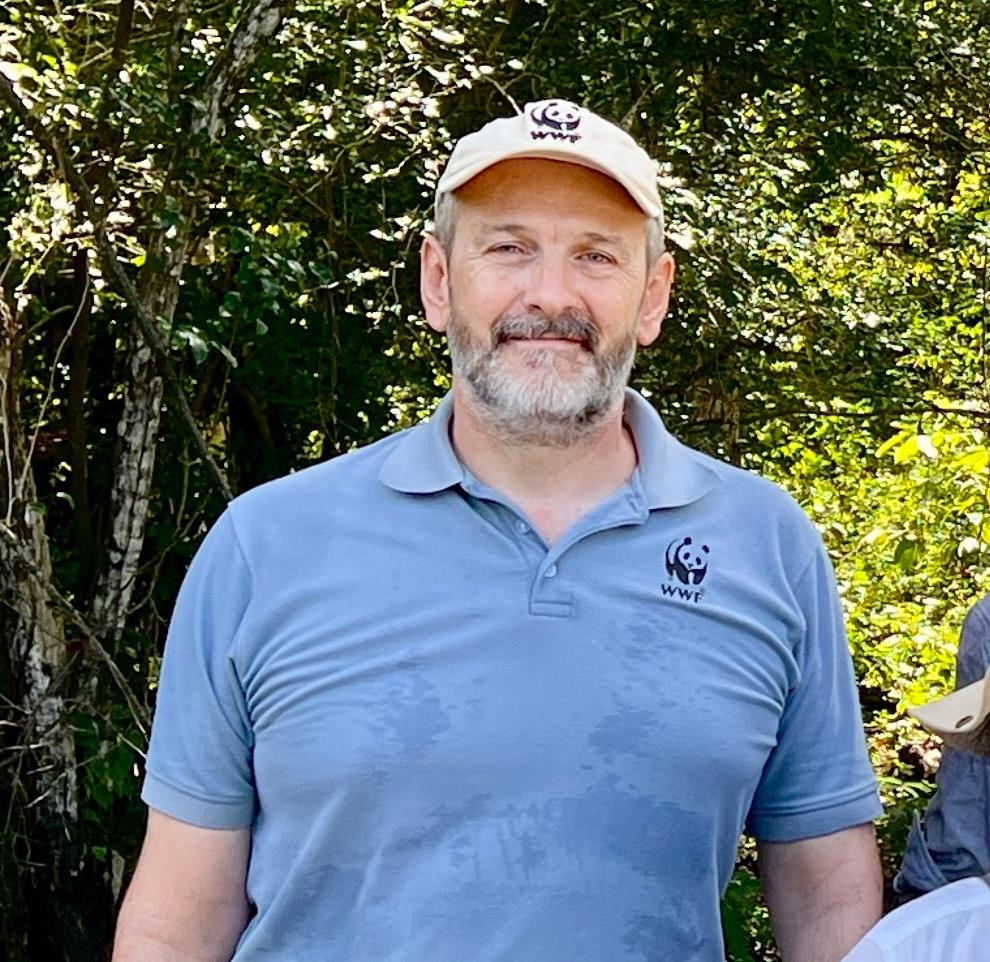
LORIS PALENTINI, COUNTRY DIRECTOR OF WWF-LAOS
As the year unfolds, the WWF-Laos team has been passionately engaged in a myriad of activities, achieving remarkable milestones. Yet, despite our triumphs, challenges persist, and obstacles continue to temper our progress.
Our dedicated efforts, both in the field and behind the scenes, have kept us aligned with our goals. Meanwhile, our journey to craft the 2026-2030 strategy has reached a peak. Through numerous workshops, we have charted a path for the next five years. With the unwavering support of colleagues and practitioners from various offices, our team has been fervently challenging norms and expanding horizons, ensuring that conservation remains the heart of Laos.
As the US crisis unfolded, we gazed into the future, determined to build a resilient pipeline, seize opportunities, bridge our technical and financial gaps, learn from the turmoil, and emerge stronger. In doing so, we strive to keep nature at the forefront of both government and public priorities.
As we share these quarterly conservation highlights, we approach Pi Mai Lao, the Lao New Year. We wish to take this moment to extend our heartfelt 'Sok Dee Pi Mai' to you and in the best of Lao tradition, we wish you and your loved ones good health and prosperity.
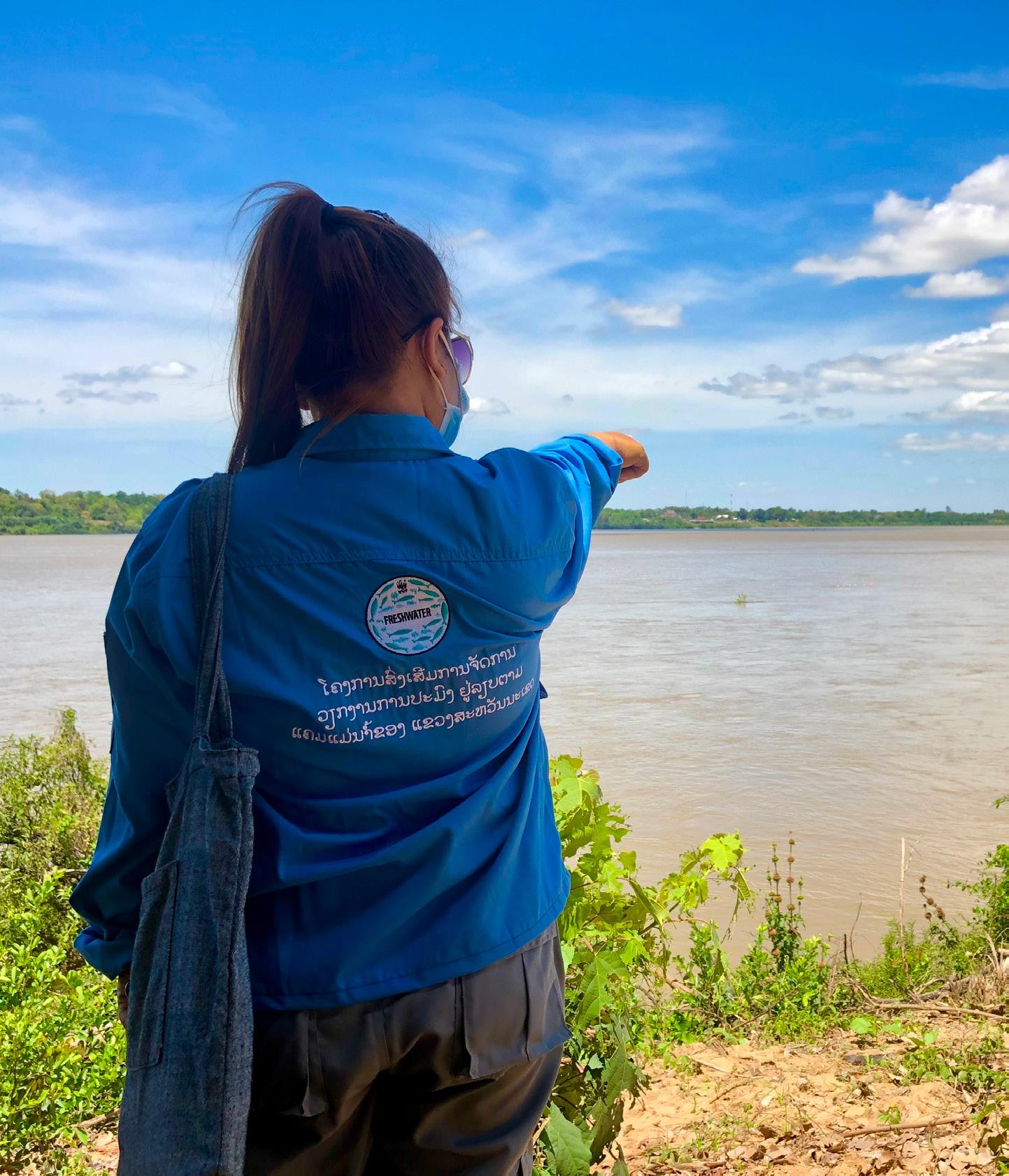
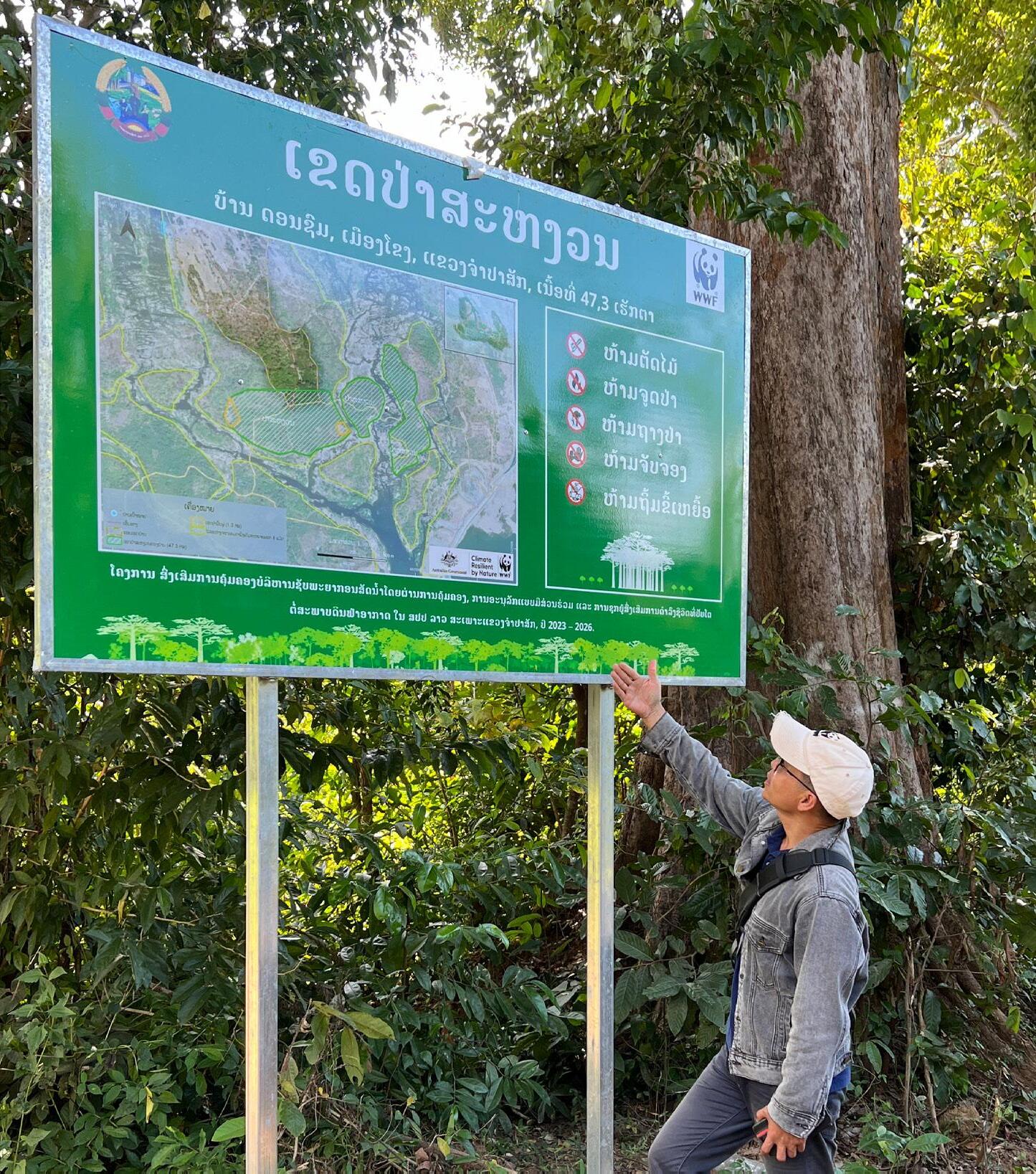
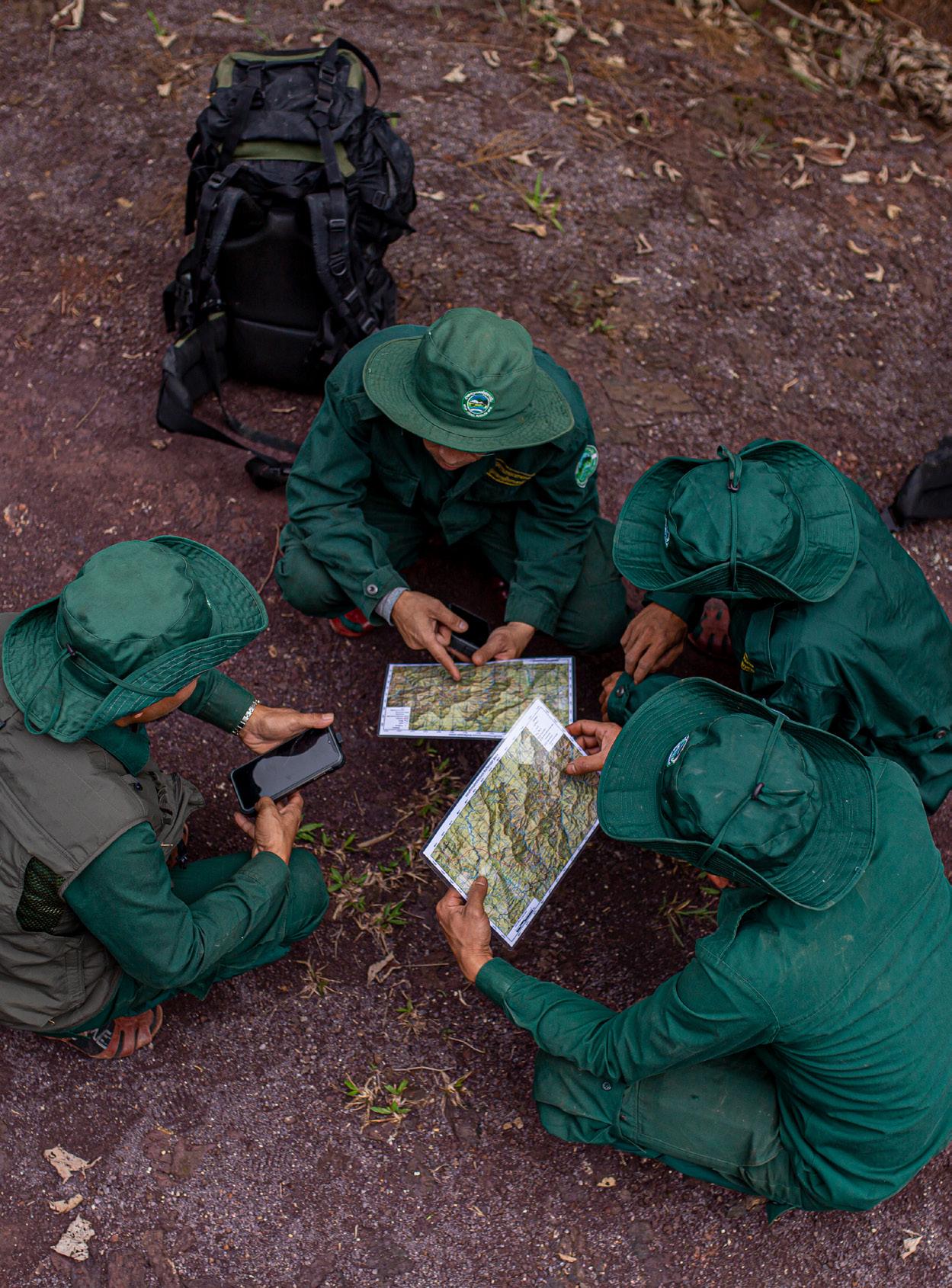
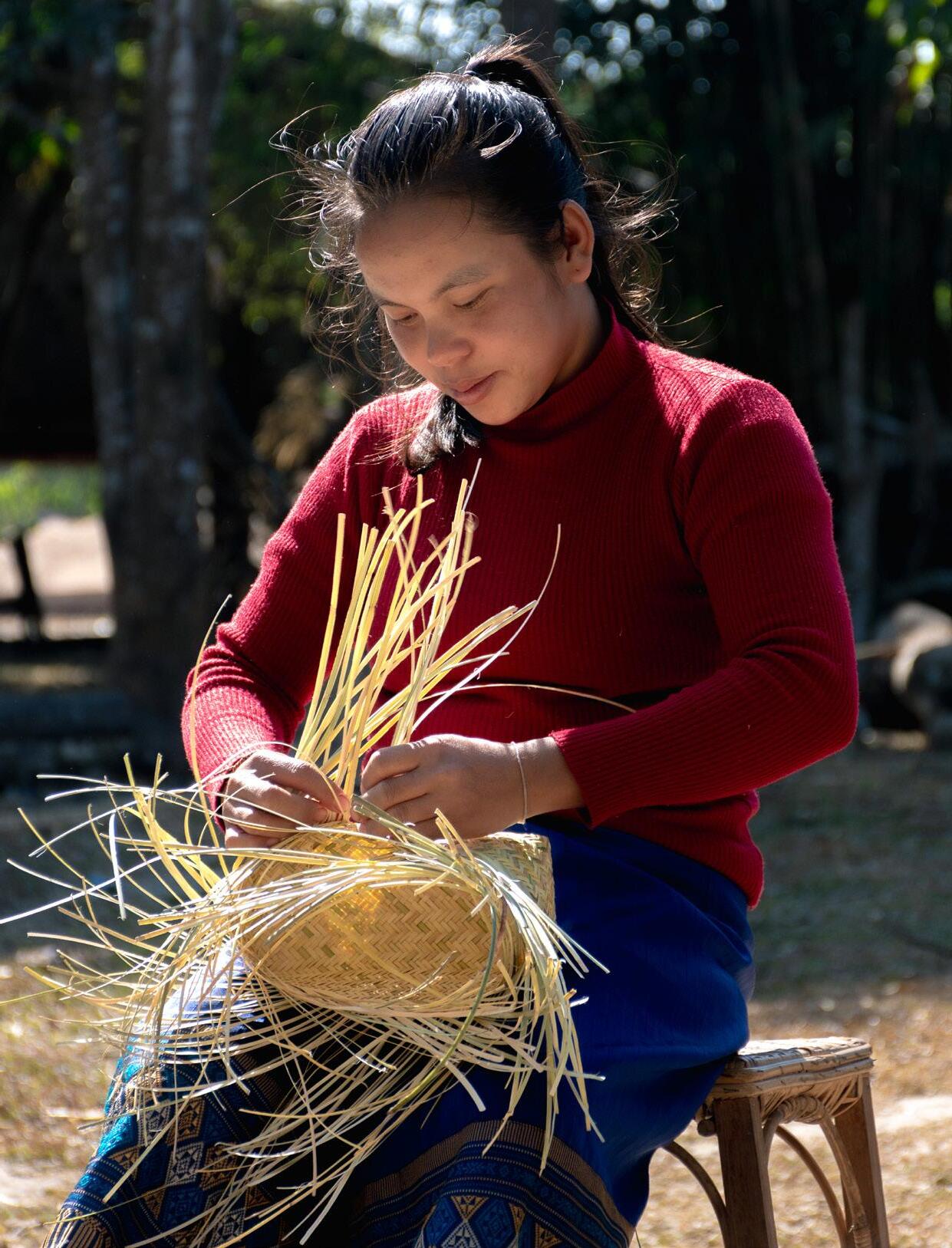
TRACKING ELEPHANTS THROUGH DUNG COLLECTION
COLLABORATING FOR THE NEXT THREE YEARS OF CONSERVATION EFFORTS
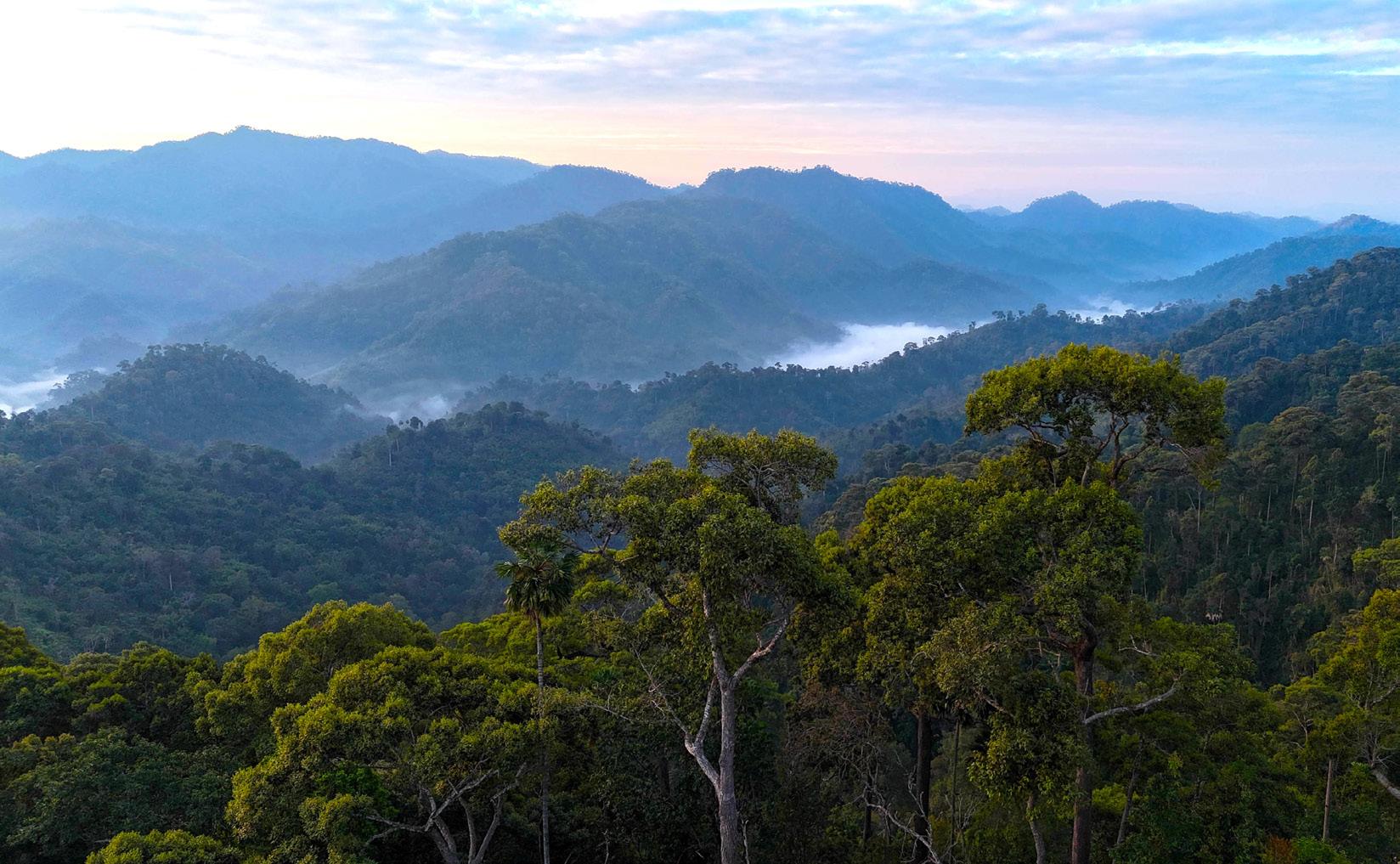
SAFEGUARD CONSULTATIONS FOR INCLUSIVE PROJECT PLANNING
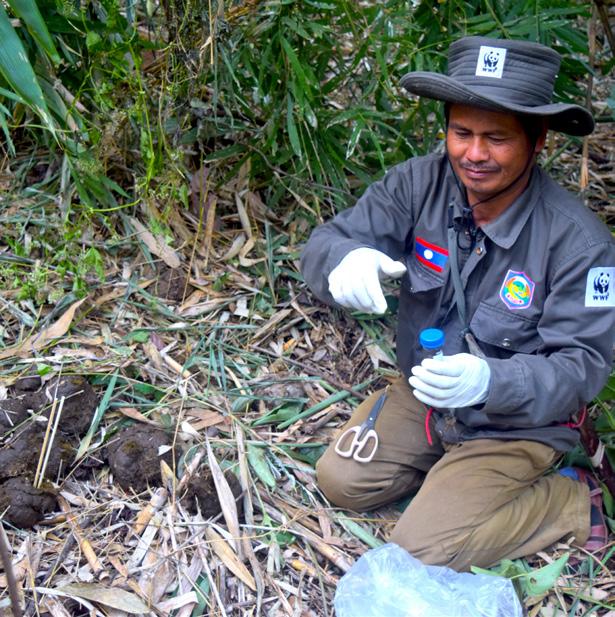
ELEPHANT DUNG SAMPLES COLLECTED FOR POPULATION TRACKING
Nearly 200 elephant dung samples were collected in Nam Poui to support efforts to estimate the population of wild elephants in the area. This collaborative effort involved WWF-Laos, the National University of Laos, protected area management, and provincial and district authorities of Sayabouly province, where Nam Poui is located. The results are expected to provide a close estimate of the wild elephant population.
OF CONSERVATION EFFORTS PLANNED
The Annual meeting for Nam Poui was successfully completed–evaluating the progress made in 2024 and reviewing the draft of a new MoU (2026–2028) to guide continued collaboration. Held in Sayaboury province, the meeting brought together participants from the central government, the Department of Forestry, the Provincial Agriculture and Forestry Office, district authorities, and other partners to reflect on past efforts and align on future priorities.
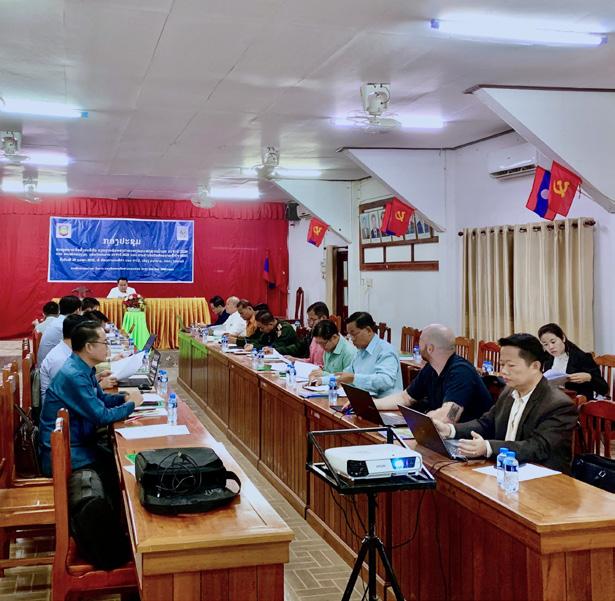
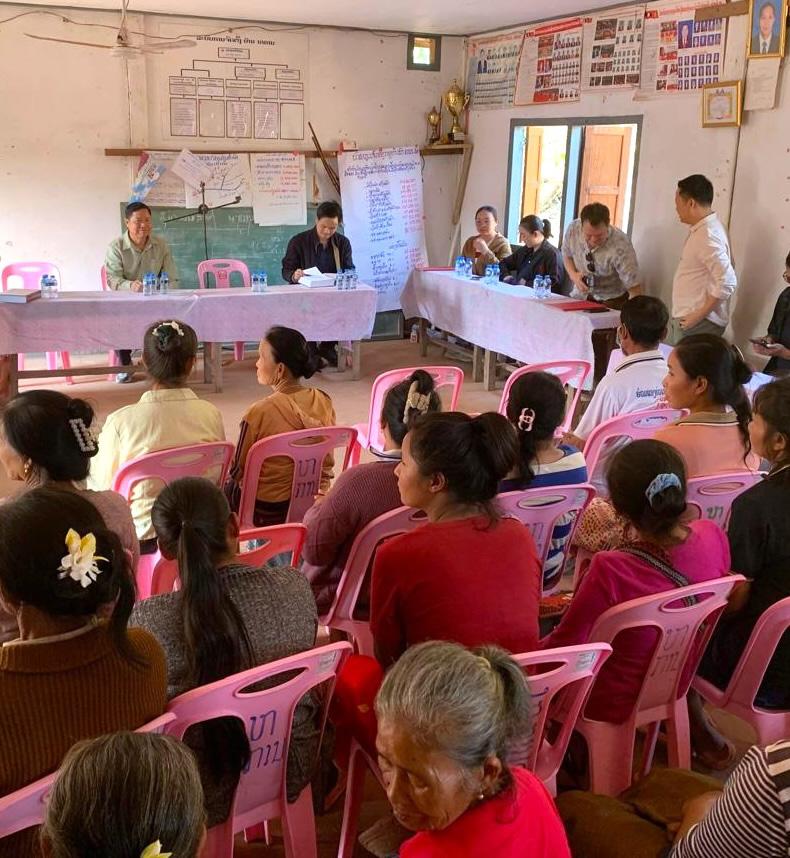
COMMUNITYBASED 'NTFP' PRODUCTION SUPPORT PROMOTING AGROFORESTRY FOR SUSTAINABLE LIVELIHOODS LAND USE PLANNING FOR SUSTAINABLE FOREST MANAGEMENT
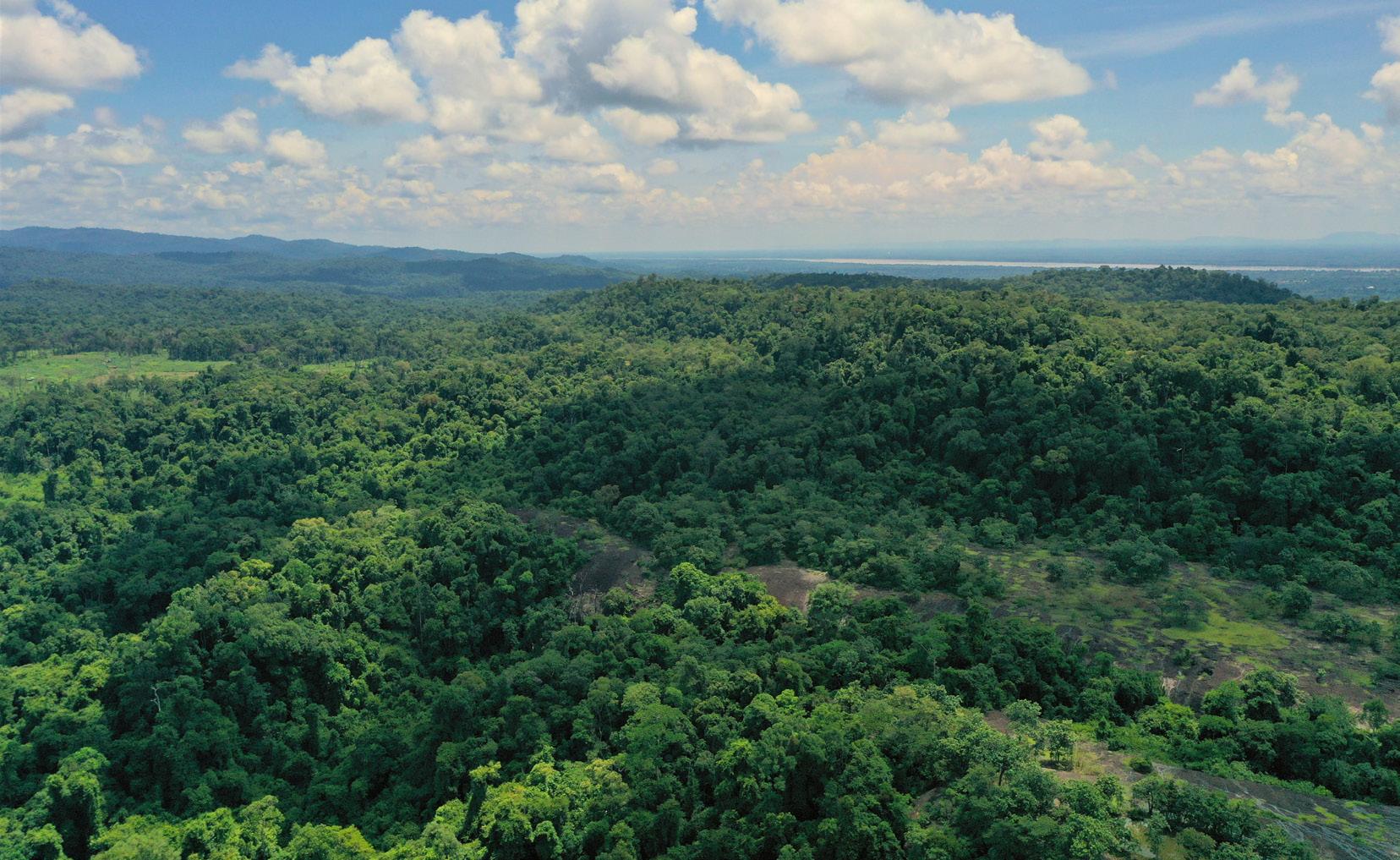
SUPPORTING COMMUNITY-LED NURSERIES FOR RESTORATION
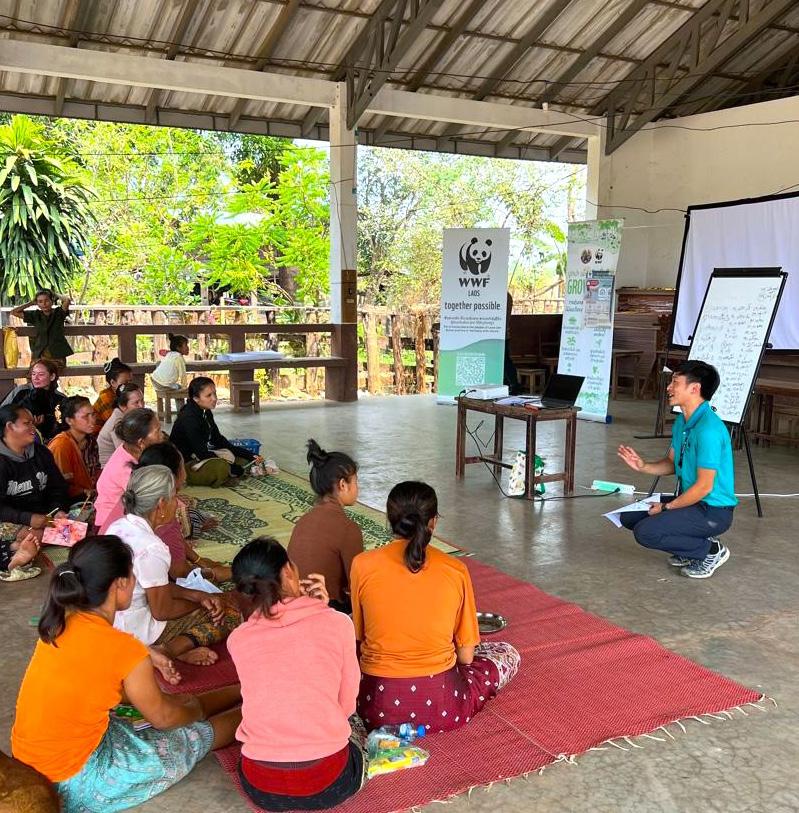
VILLAGES SUPPORTED THROUGH COMMUNITY-BASED 'NTFP' PRODUCTION 7
Villages in and around Xepian and Donghuasao were engaged through a participatory process under the Forest Restoration for Resilience and Development project to identify high-potential non-timber forest products (NTFPs) that support local livelihoods. Communities ranked NTFPs based on market potential, profitability, sustainability, and feasibility. Top selections included broom grass, rattan and bamboo.
NATIONAL PARKS PROMOTED AGROFORESTRY FOR SUSTAINABLE LIVELIHOODS 2
Community consultations and land use surveys were conducted in these two national parks to assess interest in integrated agroforestry models. Most villagers have existing coffee farms and showed strong interest in diversifying crops. The project will support selected communities with seedlings and technical guidance to promote sustainable farming.
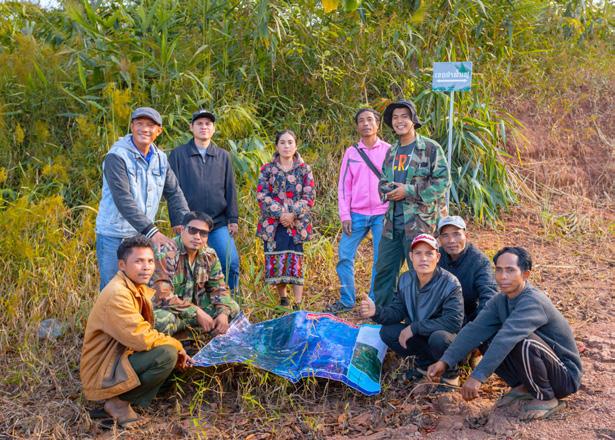
A consultation meeting was conducted with stakeholders and village representatives across six districts, covering more than 10 villages in Sayaboury province. Participants included representatives from the central, provincial, and district levels. Provided support to the Project Preparation Grant process for the Global Environment Facility–Least Developed Countries Fund project.

CELEBRATING THE OFFICIAL STATUS OF XESAP NATIONAL PARK
SEED FUND SUPPORT REACHES 15 VILLAGES FOR CONSERVATION LIVELIHOODS
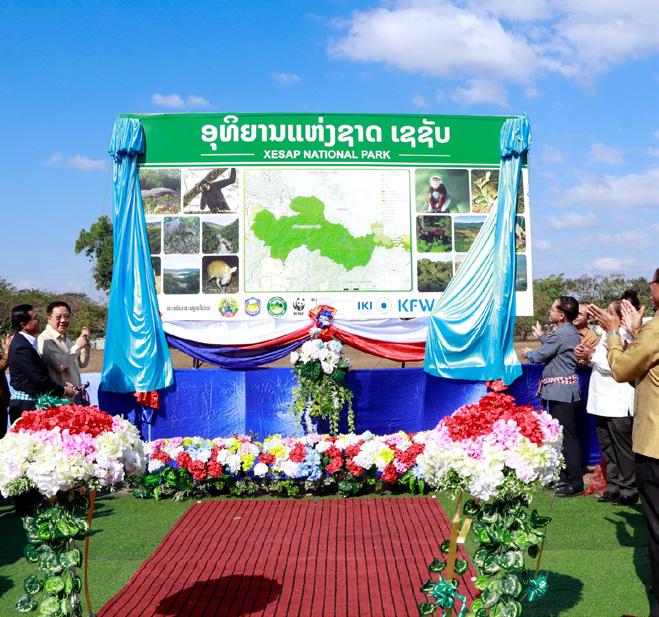

The Participatory Land Use Planning (PLUP) process was completed in three target villages in Donghuasao. With land-use mapping and forest management zoning finalized, PLUP will now guide key activities such as restoration, agroforestry, climate change adaptation, and forest monitoring to support sustainable land and forest management.
The FORRED project continues to support and monitor community-led nurseries in preparation for the upcoming restoration season. This year, 32 volunteer families joined the effort, producing over 51,000 seedlings, including native and fruit tree species. These nurseries play a key role in ensuring healthy, well-maintained seedlings are ready for planting later this year. 51,000 SEEDLINGS READY FOR THIS YEAR’S FOREST RESTORATION VILLAGES CONSULTED FOR SAFEGUARD AND INCLUSIVE PLANNING
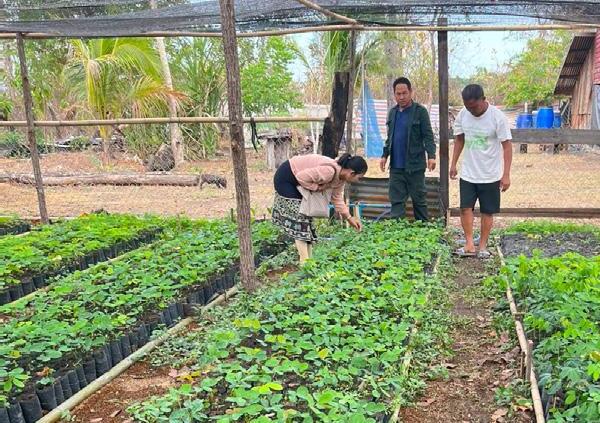
FINAL CONSULTATION ON XESAP NATIONAL PARK MANAGEMENT PLAN
CELEBRATING THE OFFICIAL STATUS OF XESAP NATIONAL PARK
An official ceremony held in Salavan province brought together nearly 300 participants from central and local government agencies, WWF-Laos, and partners. The event marked the establishment of Xesap spanning Salavan and Xekong in the Central Annamites–highlighting collaboration to effectively manage one of Laos’ and the world’s most vital protected areas.
>Read more here<
VILLAGES SUPPORTED WITH SEED FUNDING TO ENHANCE CONSERVATION LIVELIHOODS
Under the CarBi2 Project, over $291,000 was transferred to 15 villages in Xesap, spanning Salavan and Xekong provinces. Provided through the Village Development Fund, this support enables communities to implement sustainable livelihood activities–promoting local ownership, easing pressure on natural resources, and linking community well-being with long-term biodiversity conservation.

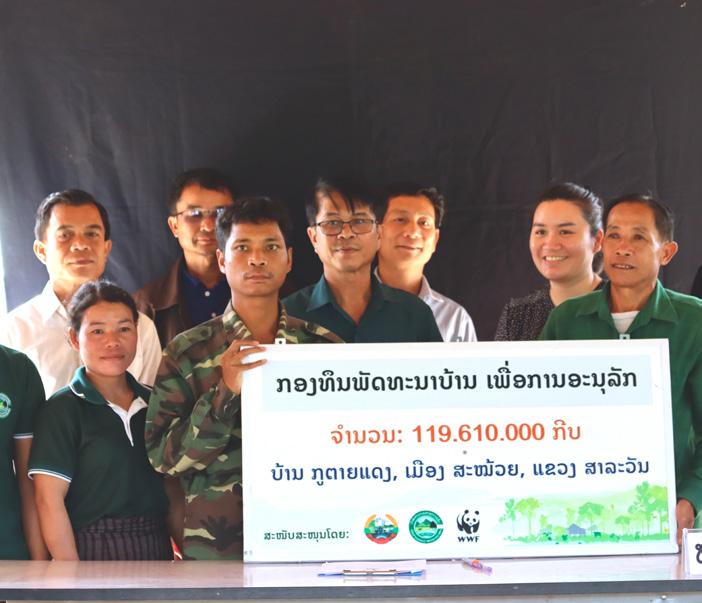
YEARS PARK MANAGEMENT PLAN NEARING COMPLETION
The final consultation on the 2025-2030 management plan was led by the Department of Forestry and the Xesap National Park Management Division, in collaboration with officials from Salavan and Sekong provinces. The plan will serve as a roadmap for biodiversity conservation and sustainable resource use, with implementation expected to begin following official approval in the coming months of 2025.
VILLAGERS BENEFIT FROM VILLAGE DEVELOPMENT FUND
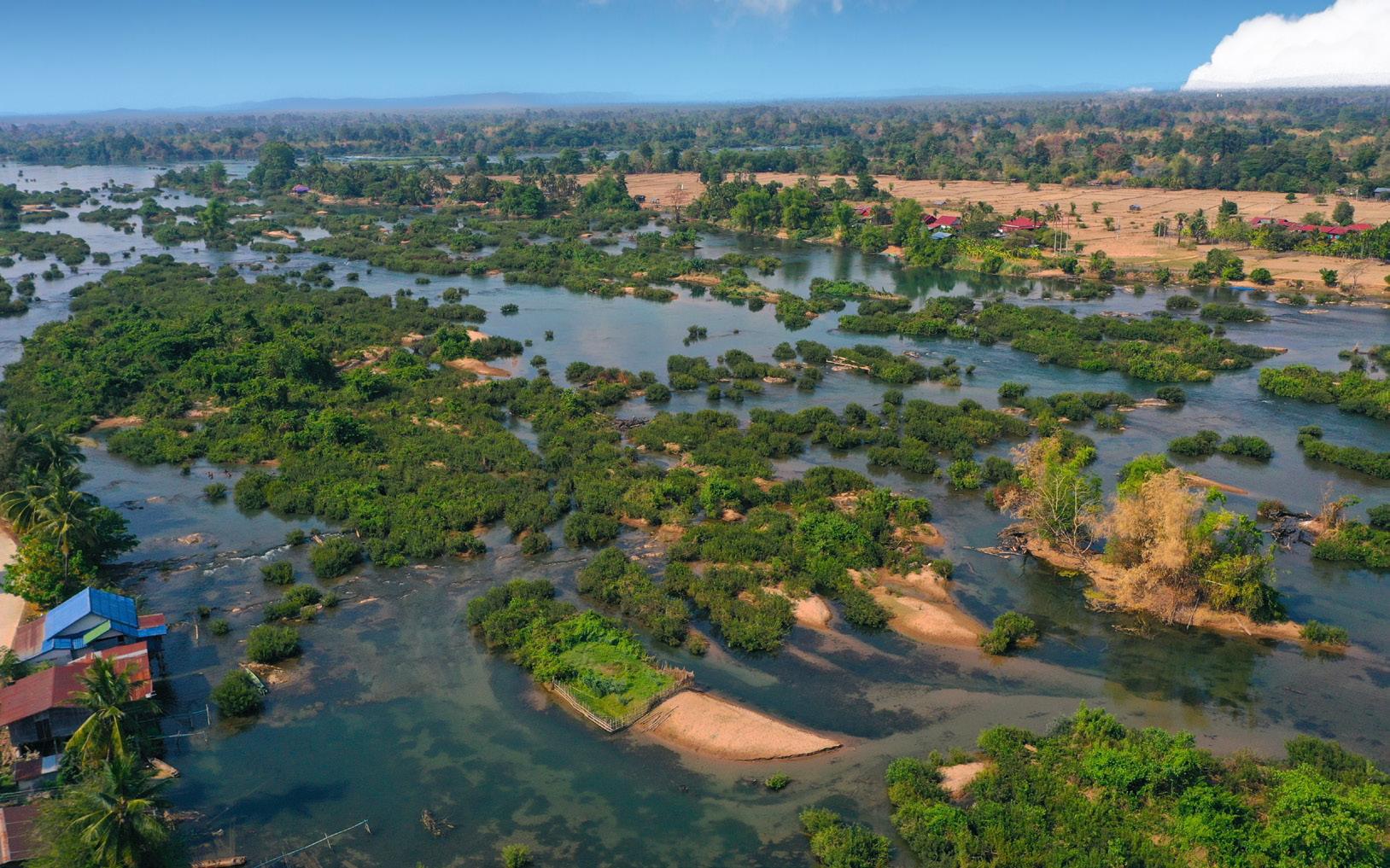

PROJECT TEAMS TRAINED ON CHILD SAFEGUARDING AND 'GEDSI'
FISHERMEN TRAINED TO SUPPORT FISH CATCH MONITORING
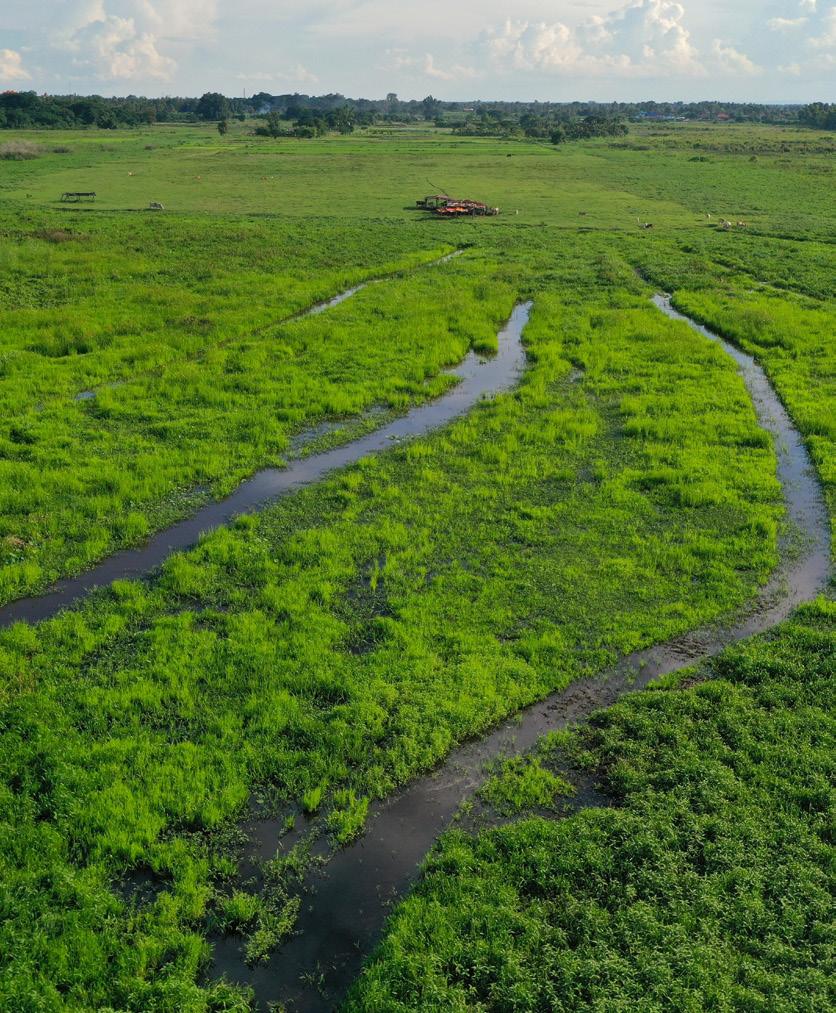
NEXT PHASE OF WETLAND RESTORATION AND EDUCATION CENTRE DEVELOPMENT UNDERWAY
Community members across six villages in Siphandone are now registered in the Village Development Fund, a seed fund established to support sustainable livelihood improvement. As part of ongoing capacity building, training was provided to fund management teams to strengthen governance, transparency, and financial literacy, ensuring the longterm sustainability and accountability of fund operations.
More than 20 project staff and partners received training on child safeguarding to strengthen awareness and safety measures during fieldwork. Staff and government partners also participated in Gender Equality, Disability, and Social Inclusion (GEDSI) training focused on gender-based violence and assessment tools. These sessions aim to ensure inclusive, safe, and gender-responsive project implementation and inform future GEDSI assessments.
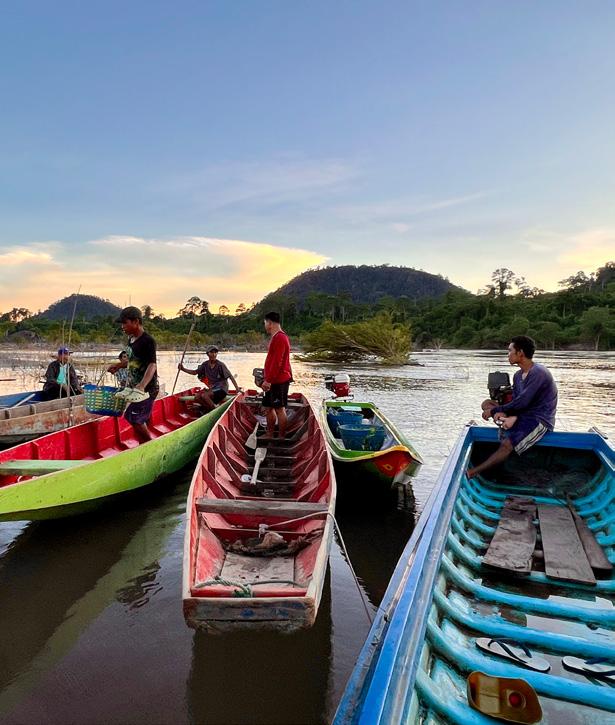
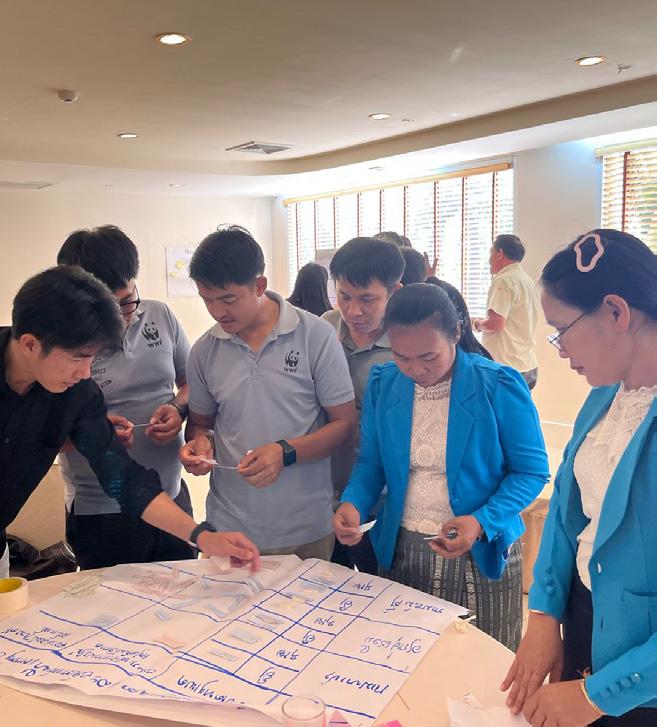
To support accurate monitoring of Fish Conservation Zones (FCZs), 120 fishermen and 6 volunteers from six target villages received training on Fish Catch Monitoring (FCM) using Kobo tools. Accurate FCM data is essential to assess FCZ effectiveness and demonstrate changes in fish catch over time. Additionally, 1.2 km of riverbank was restored through native tree planting to prevent erosion.
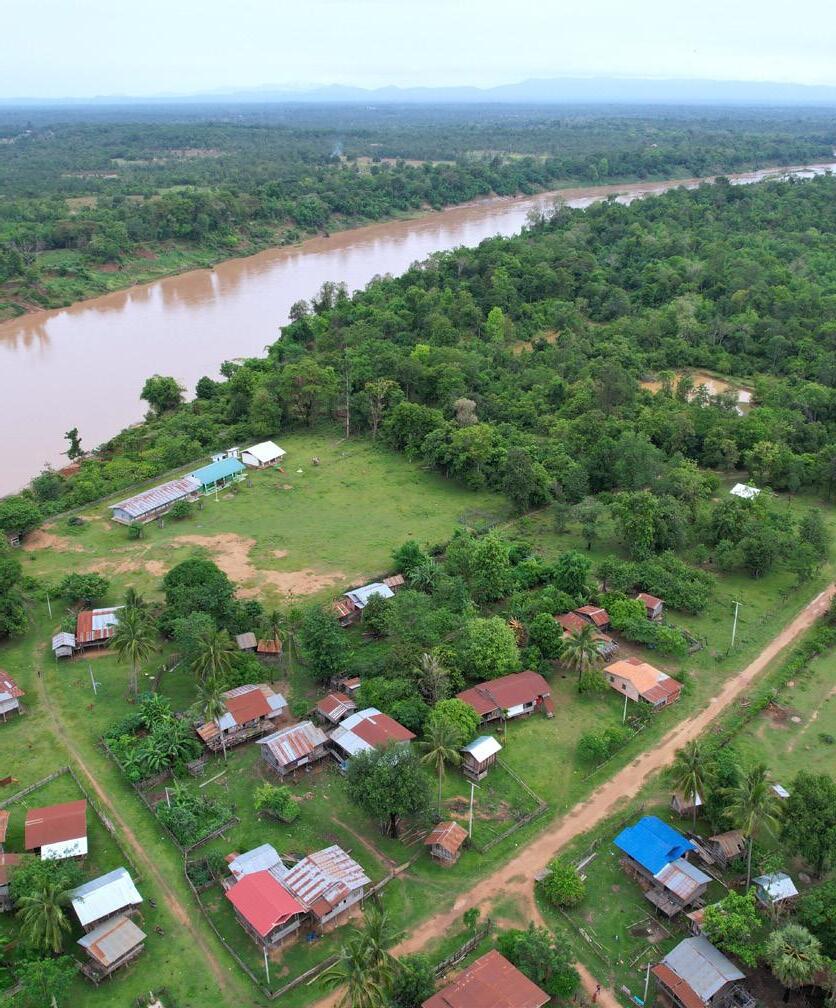
NEXT PHASE OF WETLAND RESTORATION MOVES FORWARD
A proposal was submitted to the Vientiane Governor seeking approval to continue activities at Nongkhamsaen wetland, with a collaboration agreement currently under discussion. Activities, particularly dyke construction and zoning, will begin soon as part of the upcoming implementation phase.
WETLAND EDUCATION CENTRE UNDERWAY
Together with the National University of Laos, the development of an Educational Learning Centre at Nongkhamsaen is underway. In partnership with students, the design process has begun, and the concepts will be incorporated into the site’s master plan. The centre aims to strengthen the link between education and wetland conservation, with construction expected to begin soon.
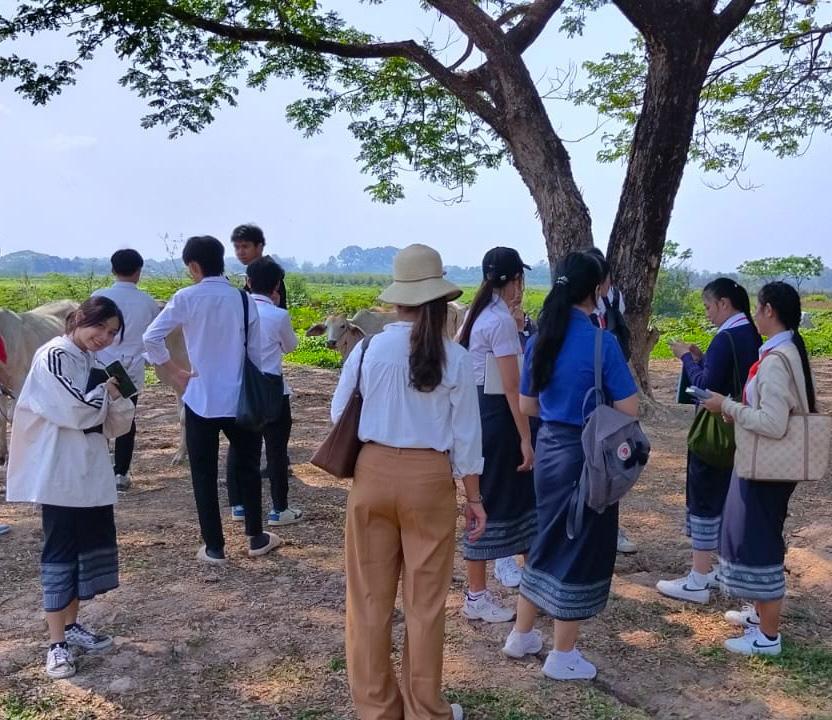
VILLAGES INFORMED AND ENGAGED ON FISHERIES REGULATIONS AND SUSTAINABILITY

VILLAGES INFORMED ON FISHERIES REGULATIONS AND SUSTAINABILITY
Fisheries laws and co-management regulations were shared with communities in five village clusters across four districts in the Xebanghieng area. The activity, conducted in collaboration with the Department of Fisheries and local authorities, aimed to raise awareness among community members and fishery management committees on sustainable fisheries and laws.
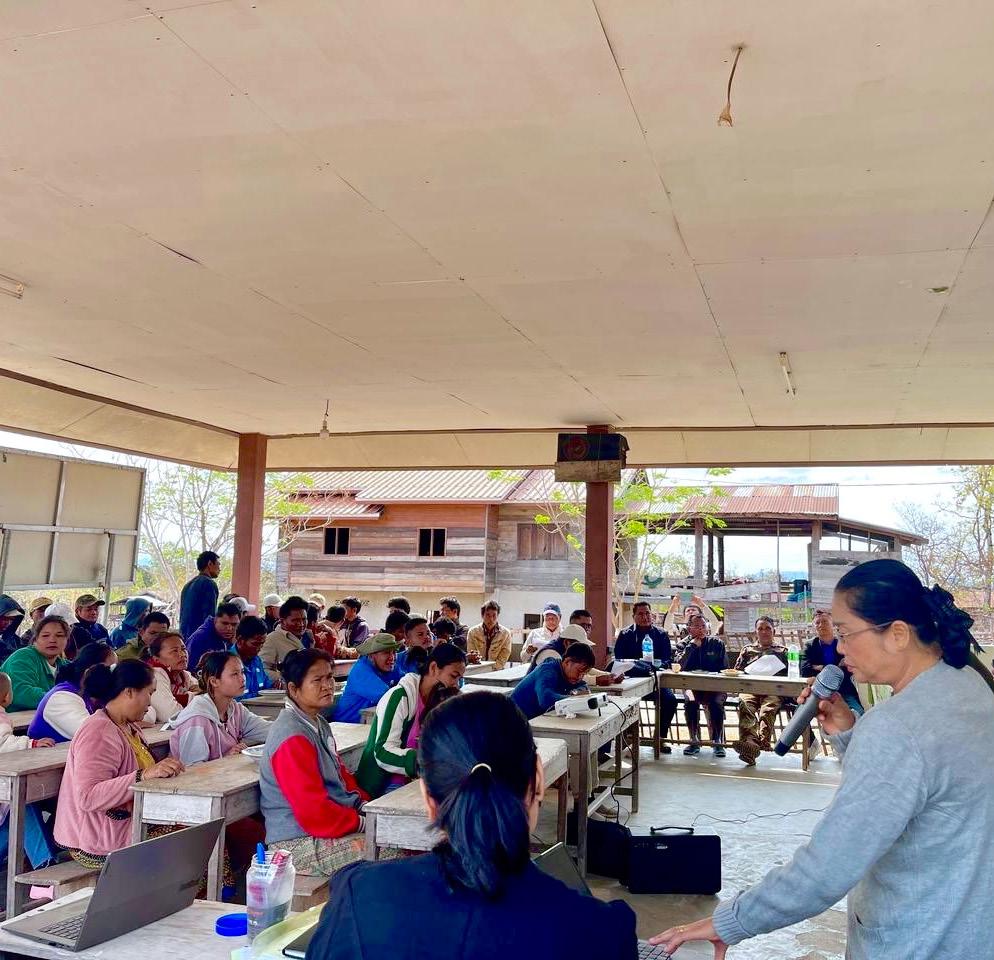
COMMUNITY MEMBERS AND STUDENTS ENGAGED IN AQUATIC SPECIES AWARENESS ACTIVITIES
The campaign raised awareness of laws protecting aquatic animals in Categories 1, 2, and 3, with a focus on fish and aquatic species conservation. Local leaders, fishery committees, villagers, and students were educated on the importance of co-management and legal compliance to support the long-term protection of aquatic resources in their communities.
'UK' DELEGATION VISITS COMMUNITY IN PHOUXIENGTHONG FOR GREEN DEVELOPMENT
COMMUNITIES TRAINED IN SMART PATROL FOR FRESHWATER PROTECTION KEY FINDINGS FROM THE 'FCZ' ASSESSMENT SHARED

COMMUNITY PATROL TEAMS TRAINED IN SMART PATROL FOR STRONGER FRESHWATER PROTECTION 2
The project introduced SMART patrolling for the Mekong section in Phouxiengthong to strengthen Fish Conservation Zone protection. Two community patrol teams received hands-on training, including a simulated enforcement scenario. A joint session with WWF-Thailand supported alignment on data collection and co-management in the transboundary Laos-Thailand freshwater area.
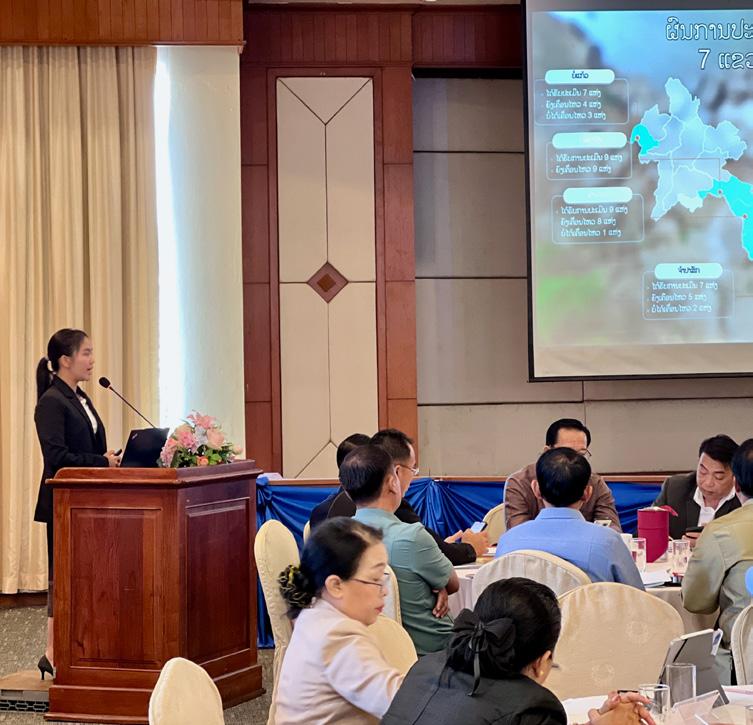
DELEGATION VISITED COMMUNITY IN PHOU XIENG THONG FOR GREEN DEVELOPMENT
WWF-Laos hosted a visit of UK Embassy representatives and donor partners to the freshwater project area in Phouxiengthong. Joined by central and local authorities, the team met with communities to discuss project activities and conservation efforts. The visit served as an initial assessment of opportunities to support sustainable livelihoods and nature-based green development.

61
FISH CONSERVATION ZONES: KEY FINDINGS
WWF-Laos in collaboration with the Department of Livestock and Fisheries, shared results from a nationwide assessment of 61 Fish Conservation Zones (FCZs) and an eDNA study conducted across several provinces. The meeting also disseminated updates to the Fisheries Law and concluded with improved understanding, discussion of key challenges, and an action plan to strengthen FCZ management.
ILLEGAL WILDLIFE TRADE CASES UNCOVERED IN TWO PROVINCES: 550 KG OF PANGOLIN SCALES AND 51 WILD ANIMALS CONFISCATED
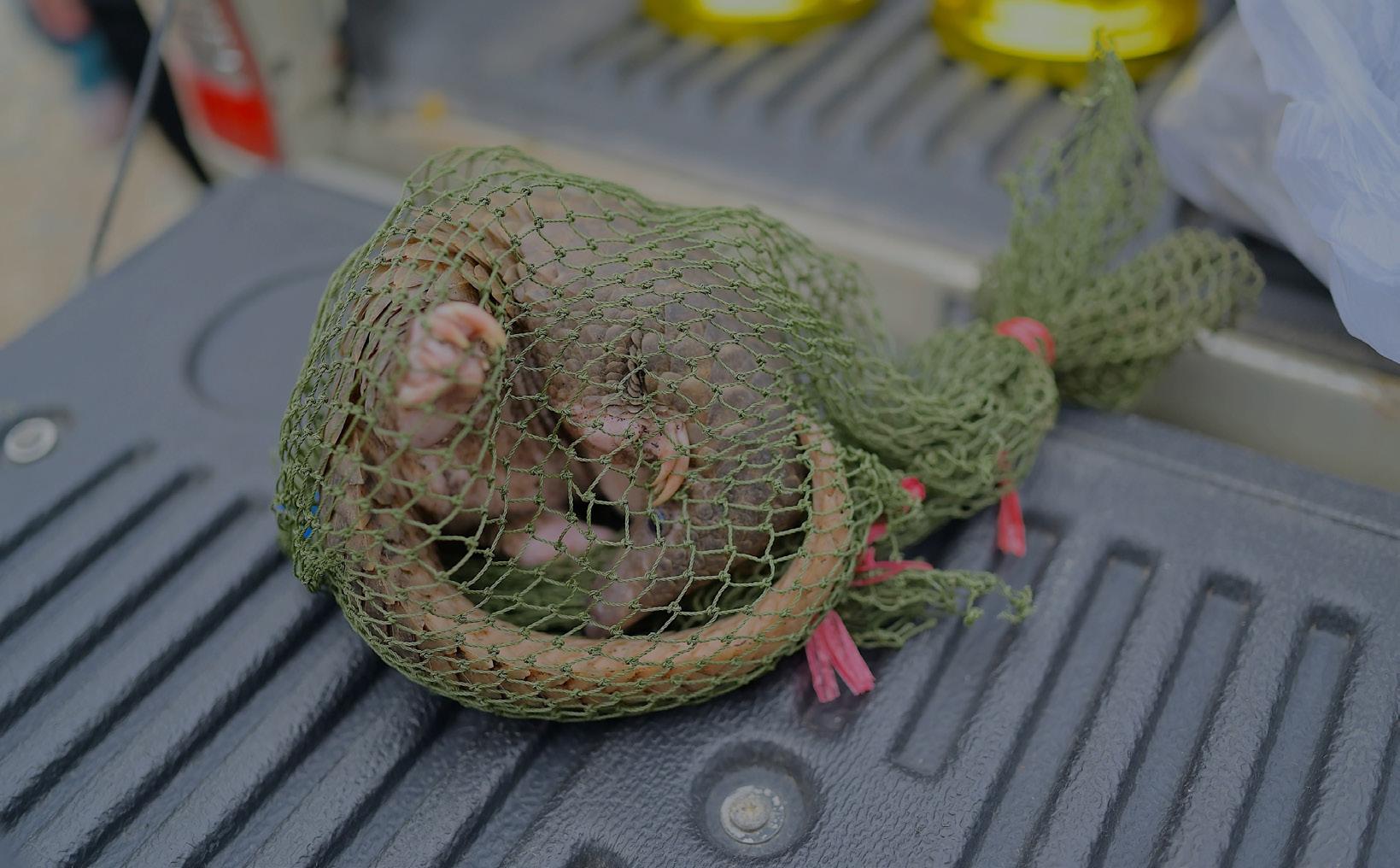
WILDLIFE LAW ENFORCEMENT OFFICIALS TRAINED ON INVESTIGATION AND PROSECUTION

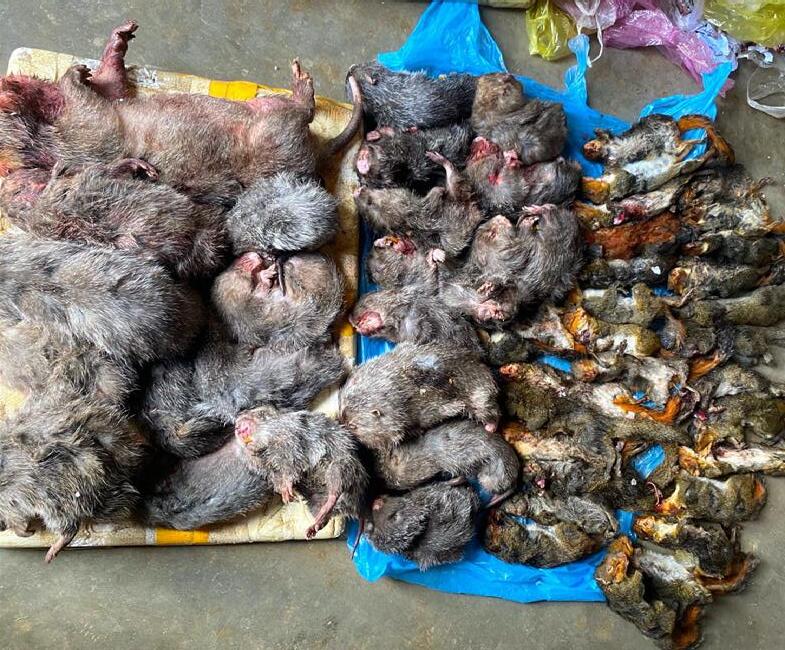
25

KEY TOURISM CITIES COMMIT TO PLASTIC SMART CITY INITIATIVE
550
2 OF PANGOLIN SCALES AND 51 WILD ANIMALS CONFISCATED IN ILLEGAL WILDLIFE TRADE CASES ACROSS TWO PROVINCES
WWF supported the Department of Forest Inspection and Provincial Offices of Forest Inspection in two significant illegal wildlife trade cases.
IN LUANG NAMTHA PROVINCE:
The authorities confiscated nearly 550 kg of pangolin scales, a dead leopard weighing 38 kg, and 13 kg of unidentified cat bones. Two suspects were arrested, and six under investigation.
IN XIENGKHUANG PROVINCE:
The inspections at local markets led to the seizure of 51 wildlife individuals, including 22 bamboorats and 29 squirrels weighing a total of 25 kg.
WILDLIFE LAW ENFORCEMENT OFFICIALS TRAINED ON INVESTIGATION AND PROSECUTION
A training was conducted to strengthen the capacity of the Department of Forest Inspection, customs, and prosecutors in wildlife crime intelligence, investigation, and prosecution. Nearly 25 officials, including six women, participated. The training covered online wildlife trade intelligence, informant-based analysis, suspect investigation, and case documentation to improve efforts in addressing and prosecuting wildlife crimes.
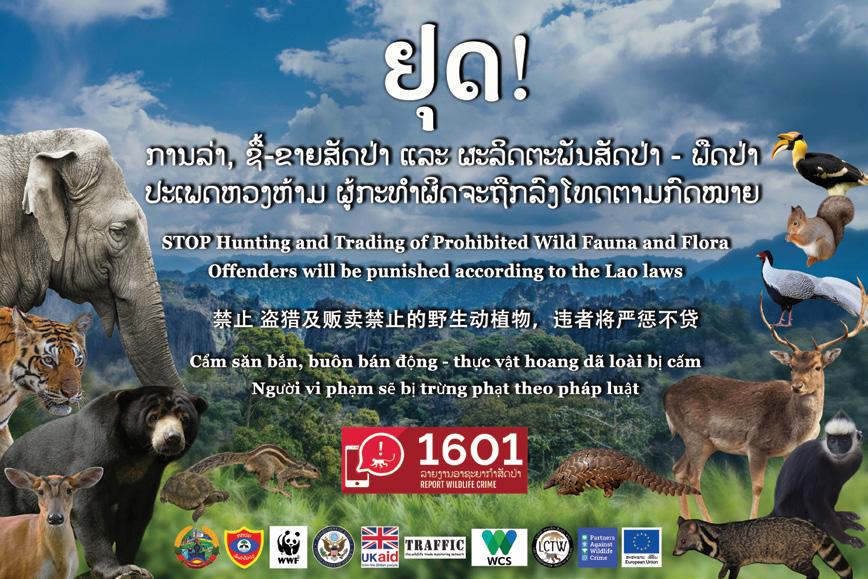
PARTNERSHIP BUILT WITH UNIVERSITIES TO TACKLE PLASTIC POLLUTION
TOURISM CITIES COMMIT TO PLASTIC SMART CITY INITIATIVE
Luang Prabang and Vang Vieng–two of Laos’ most popular tourism destinations have officially signed activity plans with support from WWF-Laos to reduce single-use plastic and improve waste management. The signing ceremonies were joined by local authorities, community representatives, schools, and government agencies.
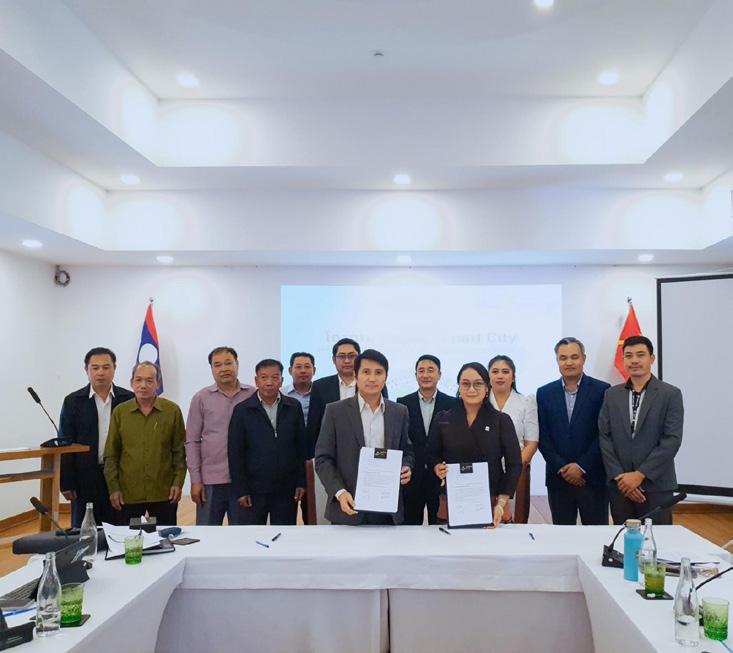
This collaborative effort marks a key step toward building cleaner, greener cities by promoting sustainable alternatives and engaging communities in long-term plastic reduction efforts, with the goal of becoming Plastic Smart Cities.
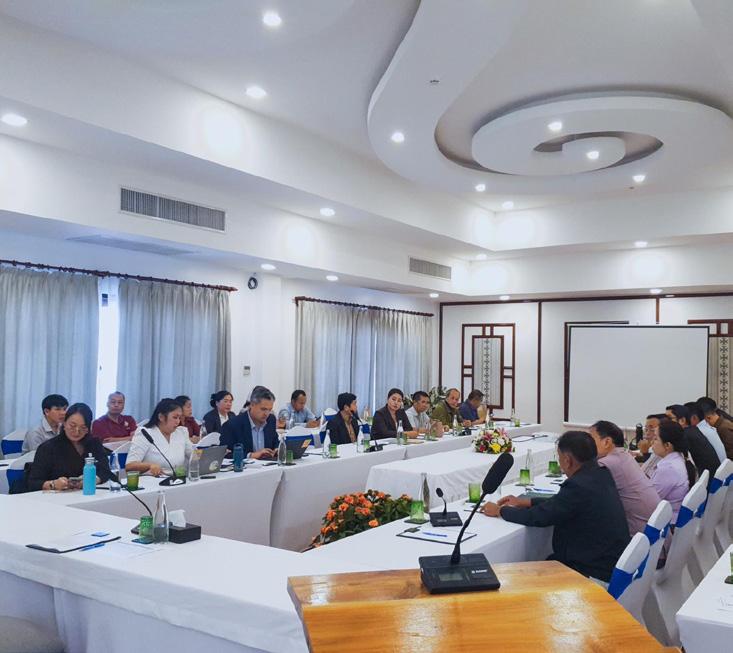
BUILT WITH UNIVERSITIES TO TACKLE PLASTIC POLLUTION
WWF-Laos has partnered with the National University of Laos and Souphanouvong University to implement community-based interventions in Vientiane capital, Vang Vieng, and Luang Prabang. Students and teachers will support outreach activities, including awareness workshops, school waste modules, audits, and behavioral studies. Preparations are underway, and a series of outreach activities will soon be implemented across all three cities.

VILLAGERS STRENGTHEN WEAVING SKILLS TO IMPROVE SUSTAINABLE INCOME
THOUSANDS OF VISUAL ASSETS CAPTURE WWFIKEA’S IMPACT ON COMMUNITIES AND 'NTFPS'
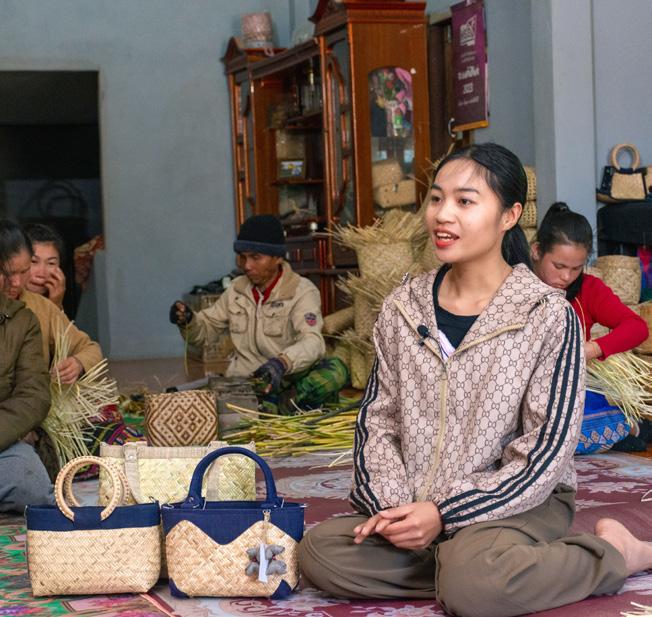
1,000
WWF-IKEA’S IMPACT ON COMMUNITIES AND 'NTFPS'
Video and photo documentation of rattan and non-timber forest product (NTFP) activities were conducted in Salavan and Bolikhamxay provinces as part of the WWF-IKEA partnership. Thousands of photos capturing NTFPs, community activities, and sustainable practices were collected. These assets will showcase IKEA’s long-standing support and community engagement. Final photo and video assets to be published online soon.
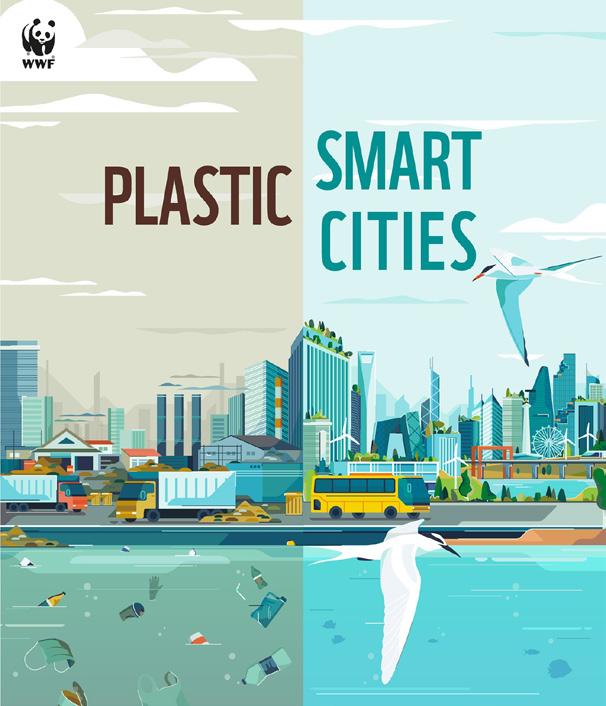
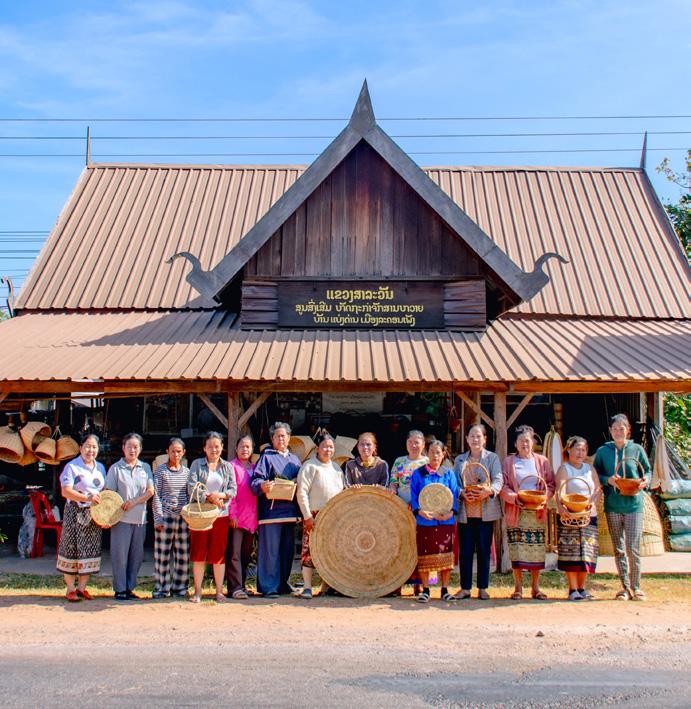
80
VILLAGERS TRAINED TO STRENGTHEN BROOM AND RATTANBASED LIVELIHOODS
Refresher trainings on non-timber forest products (NTFPs)–including broom grass, rattan, and bamboo–were held in six villages across two districts in Salavan province, engaging 80 participants. The sessions focused on harvesting, storage, and production to promote sustainable use and income generation. A separate cost structure training was also provided to a handicraft group to improve marketing of rattan-based products.
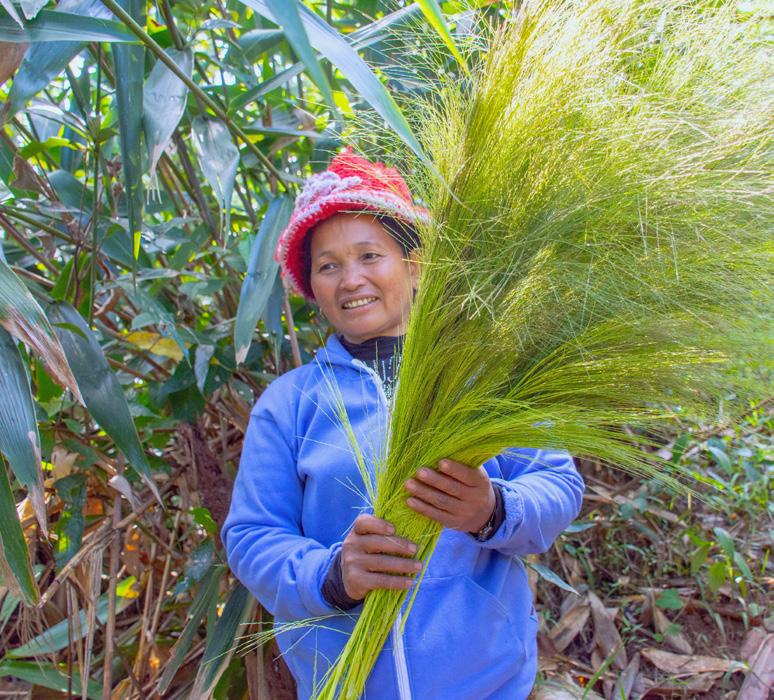
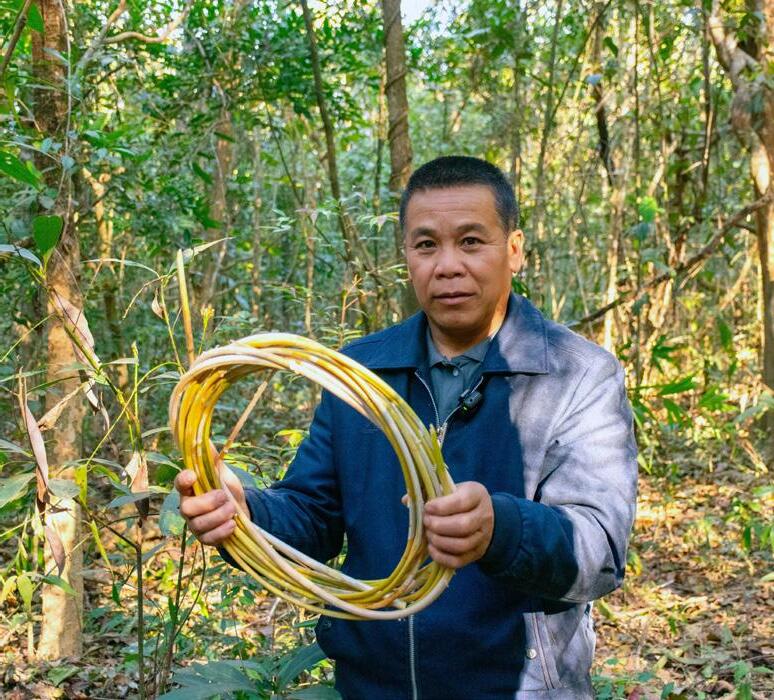


PROJECT TEAMS ENHANCED CHILD SAFEGUARDING KNOWLEDGE AND CAPACITY 3
With support from WWF-Australia, WWF-Laos hosted a child safeguarding training for project teams. The training covered key topics including policy implementation, risk management, incident reporting, and action planning. Participants included project staff and representatives from government partners. The session aimed to raise awareness and build capacity to ensure child-safe practices as part of promoting social inclusion and safeguarding across all project areas.
WWF-LAOS LANDSCAPES RECEIVED GENDER TRAININGS 3
In collaboration with partners such as the Gender Development Association, WWF-Laos conducted a series of gender trainings across its three priority landscapes. The sessions were attended by project staff and government partners and tailored to the specific needs of each team–from freshwater to forest and wildlife–strengthening inclusive conservation practices across all sites.
WWF-LAOS COMMEMORATES INTERNATIONAL WOMEN’S DAY WITH ANNUAL CAMPAIGN
WWF-Laos joined the global celebration of International Women’s Day on March 8 under the theme “Accelerate Action.” As part of our annual campaign, we highlighted the importance of gender equality in conservation through a series of activities and messages.
>Find out more here<
WWF-LAOS STAFF ENHANCED THEIR CAPACITY THROUGH THE ASIA-PACIFIC 'GEDSI' WORKSHOP
The Asia-Pacific Regional Gender Equity, Disability, and Social Inclusion (GEDSI) Workshop was held in Thailand, brought together over 30 participants from 12 WWF offices–including four from WWF-Laos. The workshop provided a platform to exchange ideas, share best practices, and develop collective solutions to strengthen GEDSI integration in conservation work.
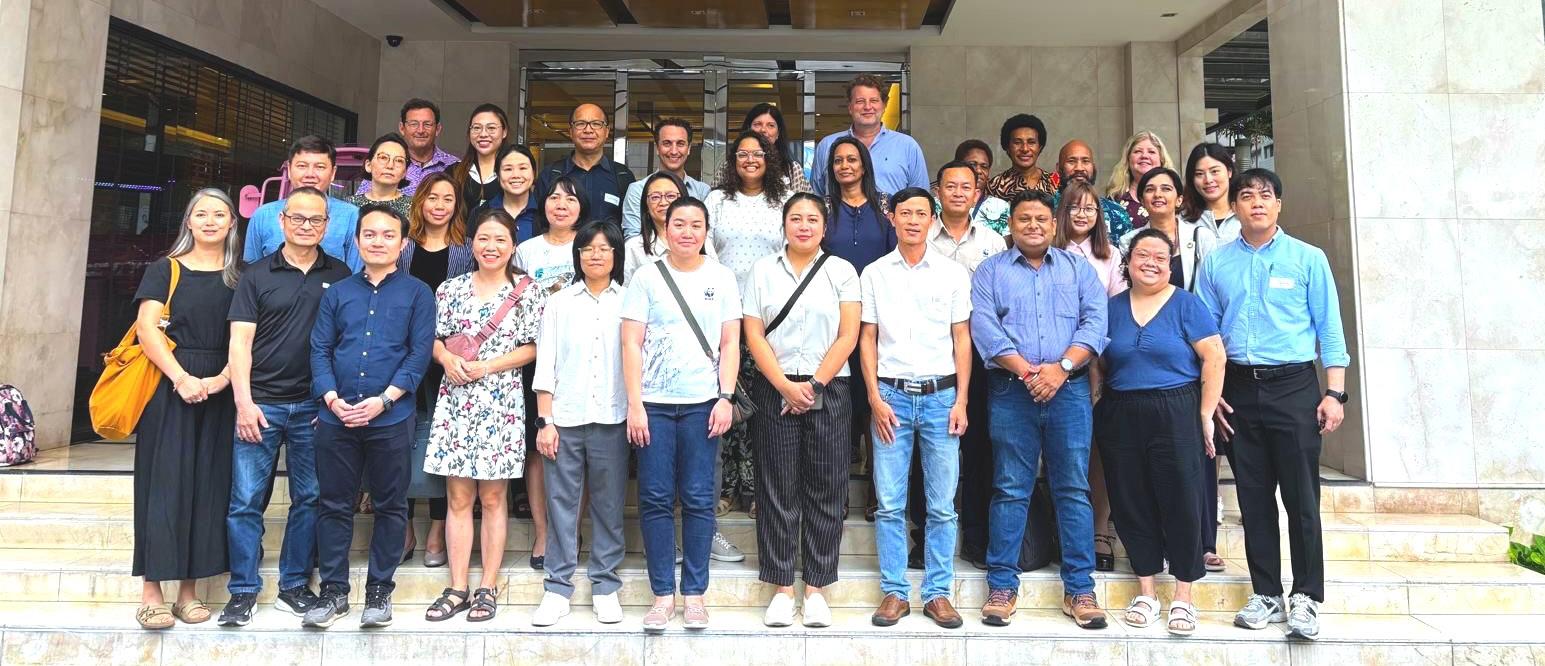
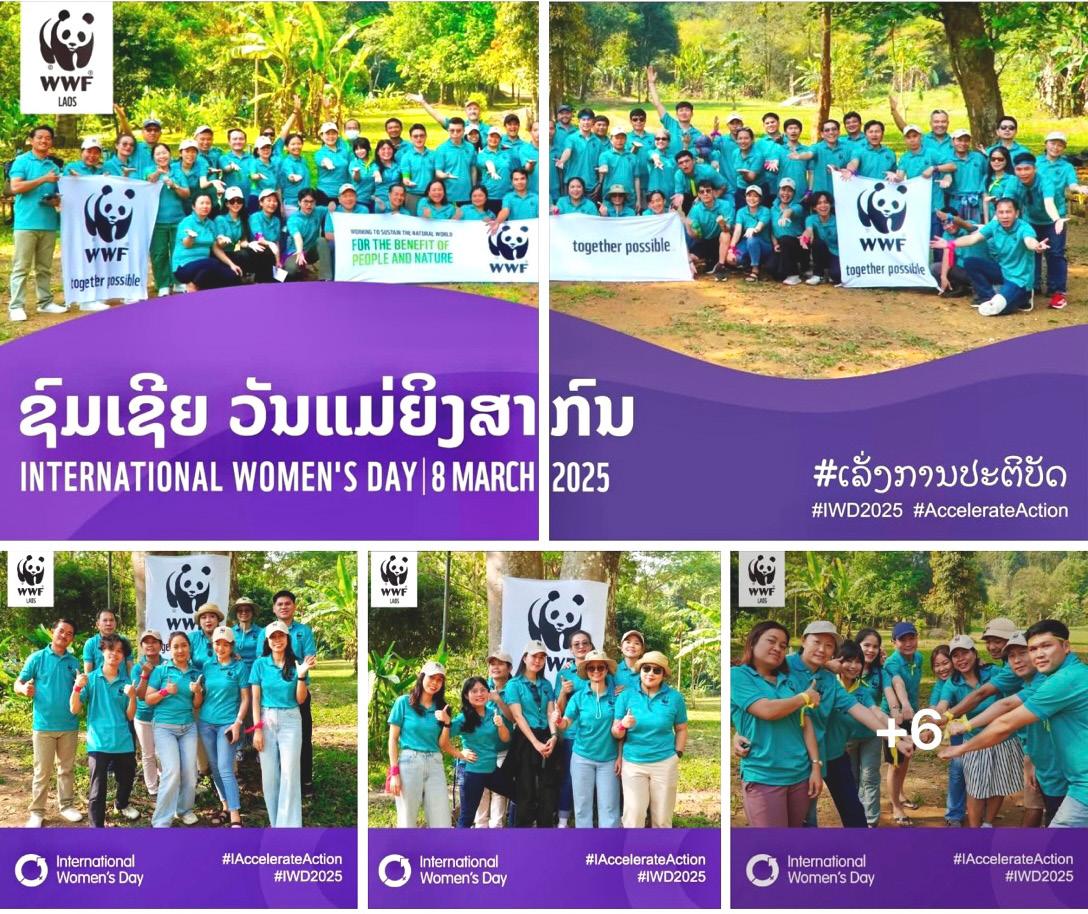

WWF-LAOS AND PARTNERS SUPPORT REVISION OF NATIONAL BIODIVERSITY PLAN
WWF-Laos, UNDP, and GIZ co-organized a national consultation to revise targets, actions, and the M&E framework for the updated National Biodiversity Strategy and Action Plan (NBSAP). The workshop gathered government agencies, CSOs, INGOs, development partners, and representatives of women and youth to strengthen national biodiversity efforts.
WWF-LAOS AND PARTNERS SUPPORT LAO GOVERNMENT IN ADVANCING 'OECM'
WWF-Laos, GIZ, IUCN, and the Department of Forestry held an initial meeting to explore Other Effective Area-Based Conservation Measures (OECMs) in Laos. This marks a first step toward building institutional capacity, revising legislation, and piloting OECMs. Next steps include forming a national taskforce and organizing the first national dialogue.
2
DAYS CONSULTATION MEETING WITH LOCAL COMMUNITIES FOR 'NBSAP' INPUT
A consultation and capacity-building workshop was held in Champasak province by WWF-Laos and GIZ, with community representatives from priority sites joining to strengthen their understanding of biodiversity. Their input supports a more inclusive, whole-of-society approach to the ongoing NBSAP revision.

4th
NATIONAL DIALOGUE BRINGS TOGETHER 150 STAKEHOLDERS FOR SUSTAINABLE DEVELOPMENT
The National Multi-Stakeholder Dialogue, led by Green Community Alliance and co-funded by WWF-Laos, brought together over 150 participants from government, civil society, the private sector, and development partners. The forum focused on the rule of law, natural resource governance, sustainable energy, and evidence-based research–emphasizing the role of informed policy in promoting sustainable development in Laos.
100,000$ SUB-GRANTS SUPPORT CSO-LED CONSERVATION EFFORTS
Three civil society organizations–Wildlife Conservation Association, Green Community Alliance, and the Association for Environmental Protection and Community Empowerment–received sub-grants under the Leading the Change project. The funding supports conservation efforts in WWF-Laos priority sites, aiming to strengthen the capacity of civil society organizations and promote sustainable, community-led biodiversity protection.
The World Wide Fund for Nature (WWF) has had a presence in Laos since the late 1980s, with the WWF-Laos office officially established in 2001. Today, our head office is in Vientiane capital, with more than five field offices across the country and over 80 staff members working with partners on conservation efforts.
WWF-Laos is part of WWF-Asia Pacific, receiving supervision and support from WWF-International and network offices in many countries worldwide. The office also receives financial support from various donors for the implementation of conservation projects in Laos.
OUR MISSION FOR LAOS IS TO BUILD A FUTURE WHERE THE PEOPLE OF LAOS CAN THRIVE AND LIVE IN HARMONY WITH NATURE.
TO VIEW OUR PREVIOUS QUARTERLY CONSERVATION HIGHLIGHTS AND OUR FY24 ANNUAL REPORT > CLICK HERE <
WWF-Laos: House No. 39, Unit 05, Saylom Village, Chanthabouly District, Vientiane Capital, Laos. Tel. +856 21 216080
Email: wwf-laos@wwf.org.la Website: www.wwf.org.la
By working in partnership with the government of Laos, private sector, communities, and local and international organizations, we can address the threats to biodiversity and habitat loss and move towards a greener, nature-based future for the sustainable and long-lasting benefit of both people and wildlife.
WWF-Laos head office
Field offices
Provinces where WWF-Laos is currently working
